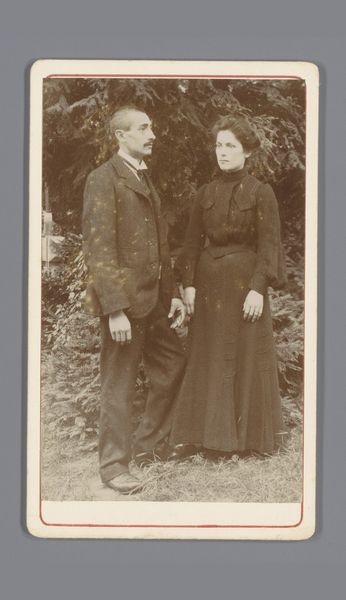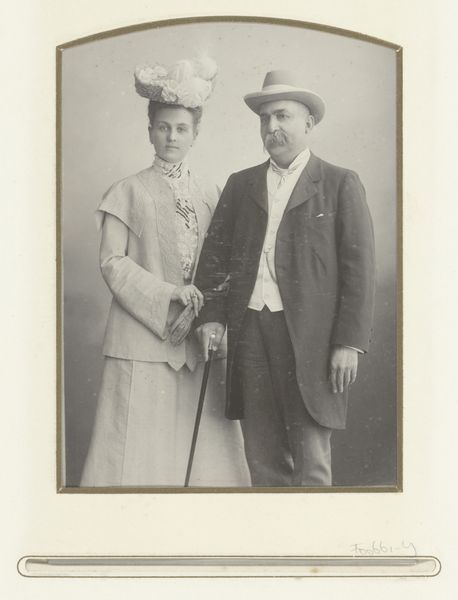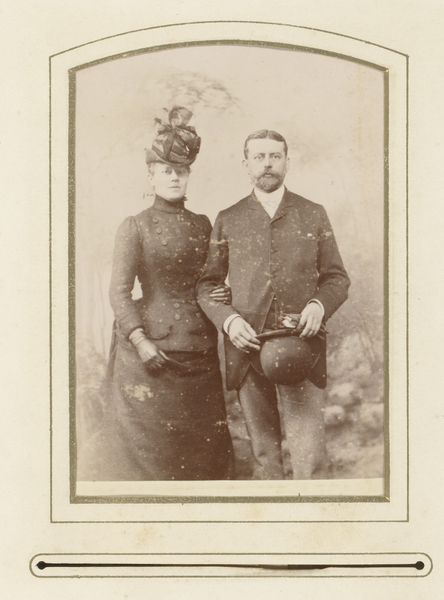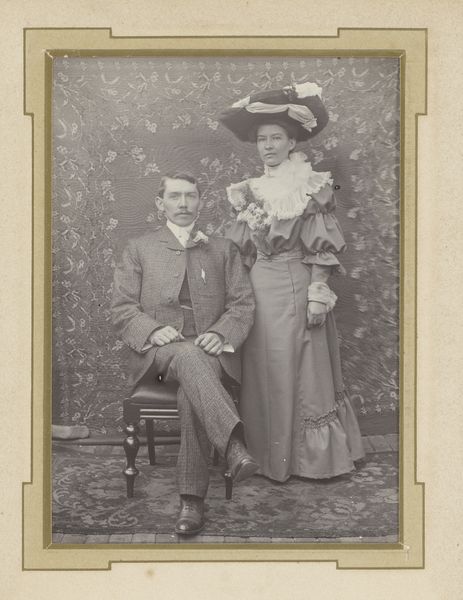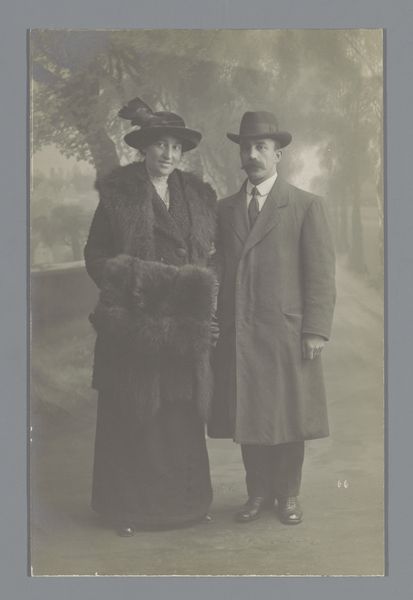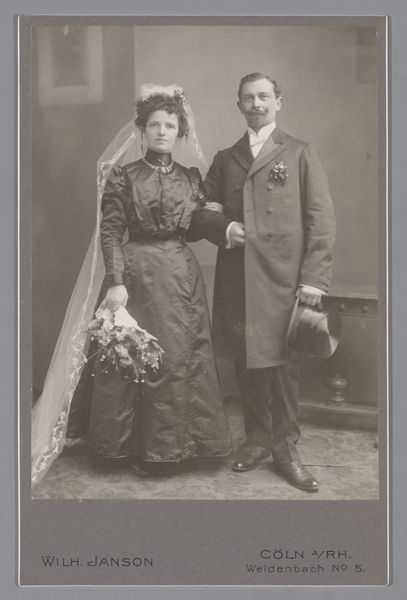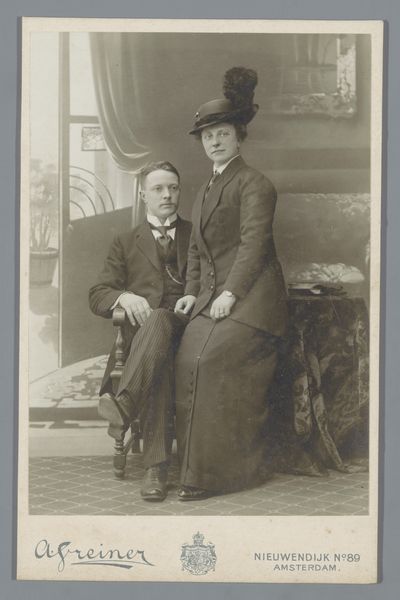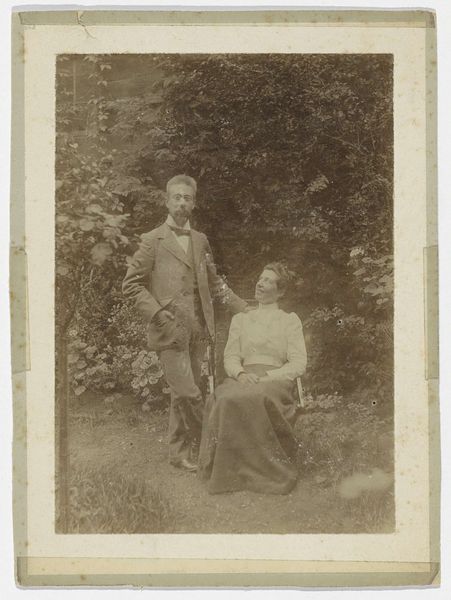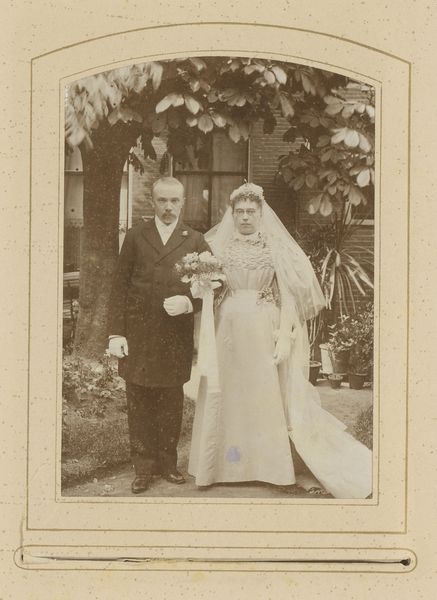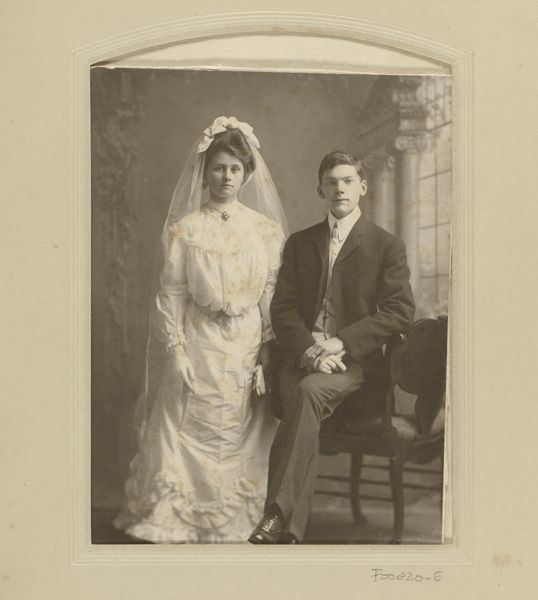
Dubbelportret van Stephan Piek en Louise Maria Piek-Fellinger 1889 - 1893
0:00
0:00
photography
#
portrait
#
photography
#
historical photography
#
portrait reference
#
genre-painting
Dimensions: height 87 mm, width 67 mm
Copyright: Rijks Museum: Open Domain
Curator: Before us is an historical photograph titled "Dubbelportret van Stephan Piek en Louise Maria Piek-Fellinger," dating from between 1889 and 1893. Editor: My immediate impression is the formality of the pose versus the playful grin of the woman, creating a strange tension. The light is soft, and everything seems to exist within a muted sepia tone. Curator: The production of portrait photography during this era was rapidly evolving due to advances in photographic technology, materials, and the increased professionalization of photography studios, which became quite a lucrative cottage industry catering to a growing middle class who could afford the new commodity. Editor: I’m curious about how they’ve chosen to present themselves. The tight corset and full skirt against the backdrop of foliage suggest certain aspirations about societal role and gender expectations of that time. It looks almost as if this was taken outside their house. Curator: Absolutely. Let’s consider the bowler hat and tailored suit worn by the man. These details signify not only wealth, but adherence to contemporary modes of dress indicating a performative aspect intrinsic to the act of being photographed. We can also talk about the materiality of the photographic print itself, the paper it’s printed on, and the chemicals involved in the process—a very specialized endeavor then. Editor: Thinking about it intersectionally, it's difficult to separate class from gender when discussing their garments. Louise's hourglass figure, made possible by the constricting corset, becomes almost an exaggeration of femininity to fulfill the period's beauty ideals. Even Stephan's pose feels calculated—casually slipping his hand into his pocket while positioned slightly forward to denote dominance. These aren't accidental choices. Curator: I completely agree. They both participated consciously in creating this narrative around themselves, using clothes as signs to represent class. What interests me most is trying to unpack how these kinds of consumer items affected class mobility back then. Did this photographic ‘performance’ impact or reflect material realities in their social standing? Editor: The very act of commissioning a portrait was a way for individuals to assert their presence, especially when previously these acts were almost exclusively the reserve of elites. It marks a fascinating shift in who gets to represent themselves and control their own image. Curator: Food for thought, indeed! This exploration has made me consider photography as both document and construct – reflecting its subject in light-sensitive chemicals but shaped inherently by prevailing attitudes. Editor: For me, it’s about teasing apart what they’re telling us versus what the photograph inadvertently reveals about power dynamics. A tiny square exposing far bigger stories than it initially seems!
Comments
No comments
Be the first to comment and join the conversation on the ultimate creative platform.
